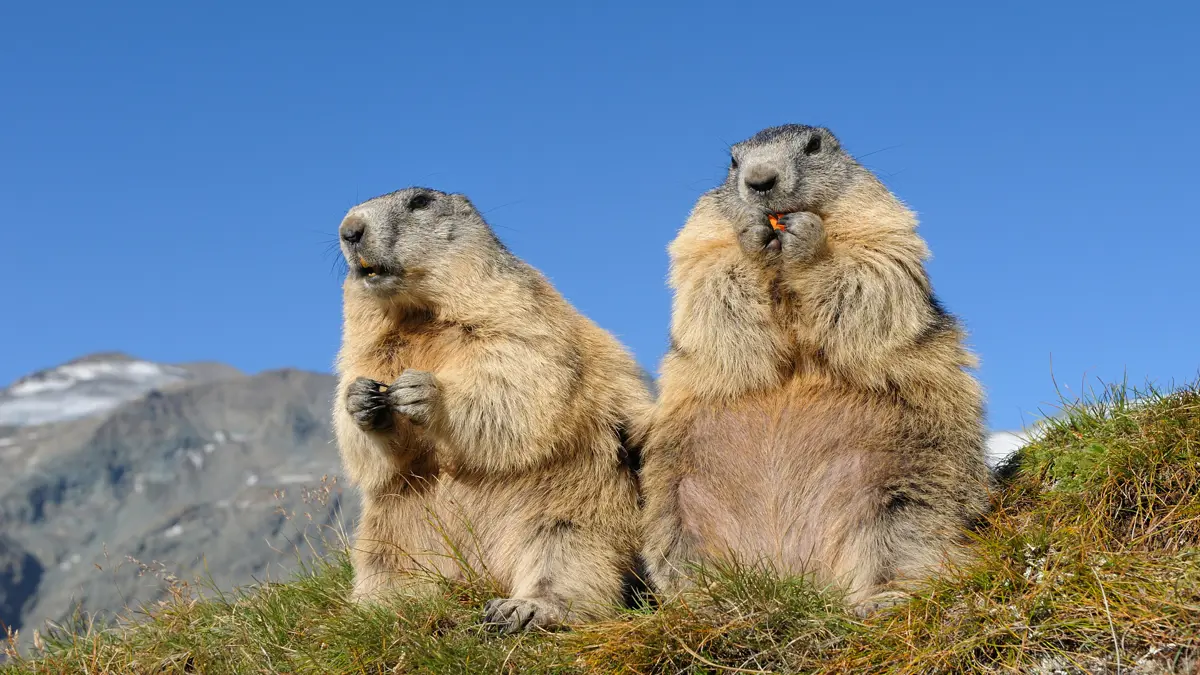
The fauna of the lakes and mountains
There’s something magical about spotting wildlife in its natural home. From the majestic golden eagle to the lively little marmot, you’ll find lots of wild animals in Europe's lakes and mountains.
Here’s what you might see..
Marmots (Marmota marmota)

Shy creatures, you are more likely to hear rather than see a marmot in the wild. The colouring of their fur means that they take on the appearance of a rock when sun-bathing on the grassy slopes. But their high-pitched whistle, which they sound as an alarm warning other marmots of approaching predators, is very distinctive.
For an easy glimpse of these adorable animals head up the Grossglockner Alpine pass, which can be easily visited from Saalbach and Hinterglemm. The local marmots have become accustomed to tourists and have grown charmingly tame as a result.
Chamois (Rupicapra rupicapra)
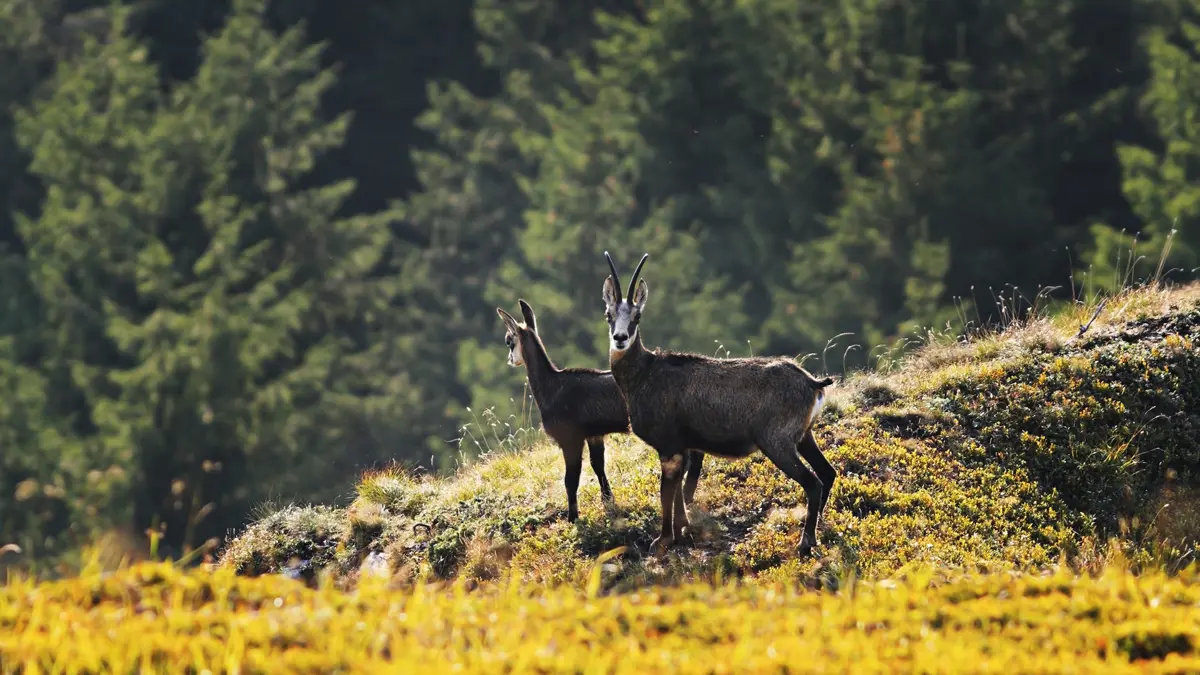
While fairly common amongst the Alps, a good pair of binoculars comes in handy when trying to spot these dexterous mountain goats. Showing no fear, they are often found gallivanting with ease between the steep, rocky crags and walking along rock faces so vertical it should be impossible. Their extraordinary climbing agility comes from their ability to separate the two toes of their hooves, providing them with increased grip for traversing the treacherous mountainside.
There is an opportunity to spy chamois on a trek through the Bauges Mountain Range en-route to the Le Semnoz Refuge, near Annecy in France. And if you are unable to spot this shy creature you can at least reward your endeavours with a tasty, hot waffle while drinking in the stunning views.
Ibex (Capra ibex)
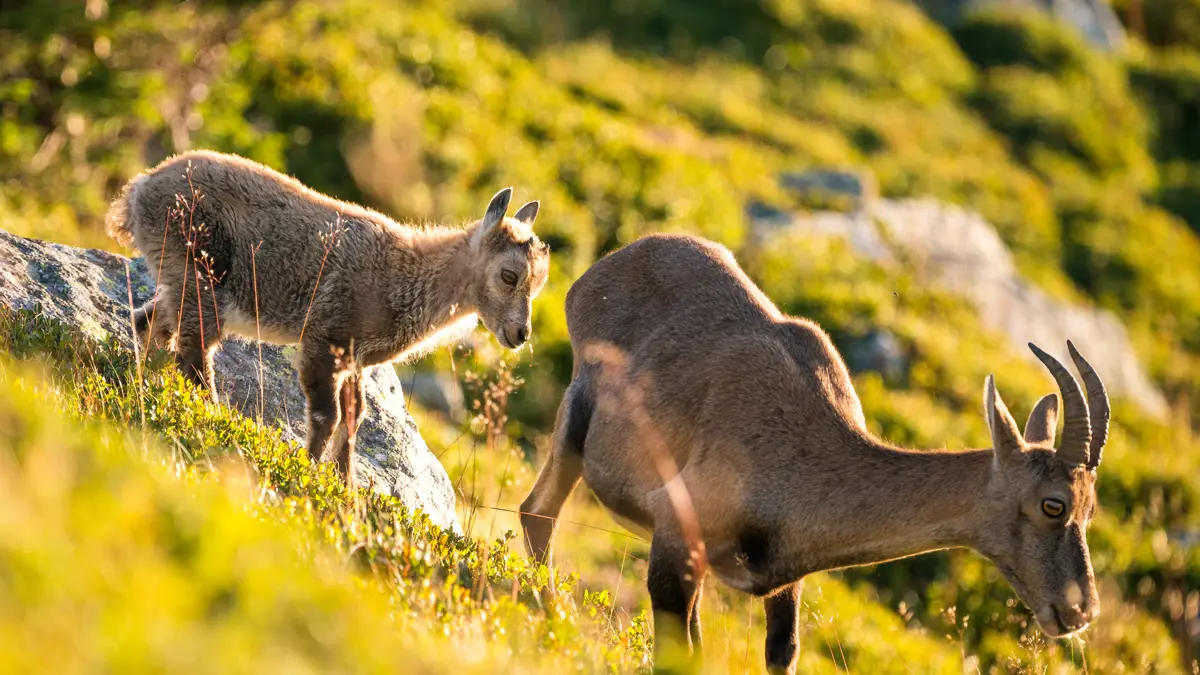
This magnificent mountain goat is characterised by its phenomenal, backward-curving horns which can grow up-to 140cm (55 inches) in length and is used to defend itself from predators. Despite its formidable appearance for self-defence, the Alpine Ibex is incredibly rare. Towards the beginning of the 19th Century, it was virtually extinct, but extensive conservation efforts mean that it can still be spotted today in high regions of the Alps.
If you are struggling to spot the ibex in the wild, try a visit to the Wildpark Aurach near Kitzbuehl in Austria. As the Tyrols largest outdoor enclosure you will have a chance to spot deer, lynx and wild boar in addition to the elusive ibex.
Golden Eagle (Aquila chrysaetos)
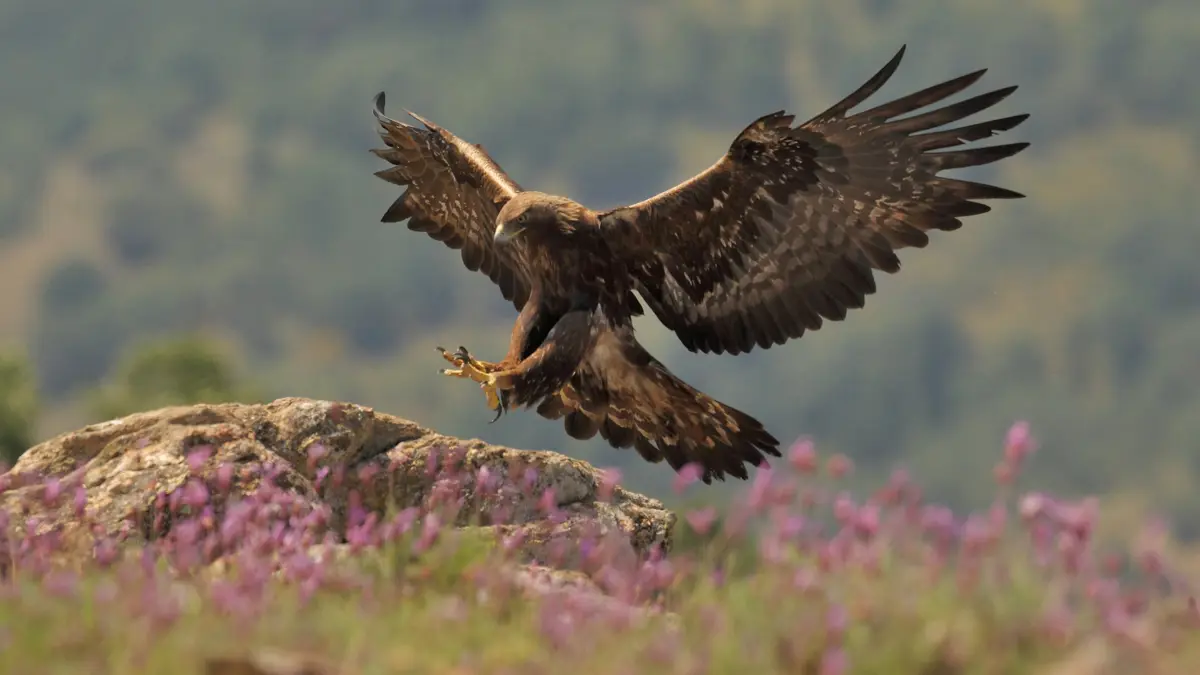
The golden eagle is one of the most beautiful birds of prey in the lakes and mountains. Soaring high in the sky, where it glides on air currents in search of prey, its impressive wingspan can reach over 2 meters in length – a truly magnificent sight.
In Austria, where the golden eagle is known as the Steinadler (or stone eagle), there are estimated to be approximately 300 breeding pairs. And it is calculated that there may be as many as 1,200 breeding pairs across the Alps, making it one of Europe’s largest populations of golden eagles.
Golden eagles mostly hunt small mammals and birds which are easy for it to carry. However, it has also been known to take down much larger prey, such as chamois, which it will kills by toppling the creature over cliff edges. The golden eagle has been spotted hunting around the mountains close to the Zillertal valley. An excellent base for this area of Austria is the popular resort of Mayrhofen.
Alpine Chough (Pyrrhocorax graculus)
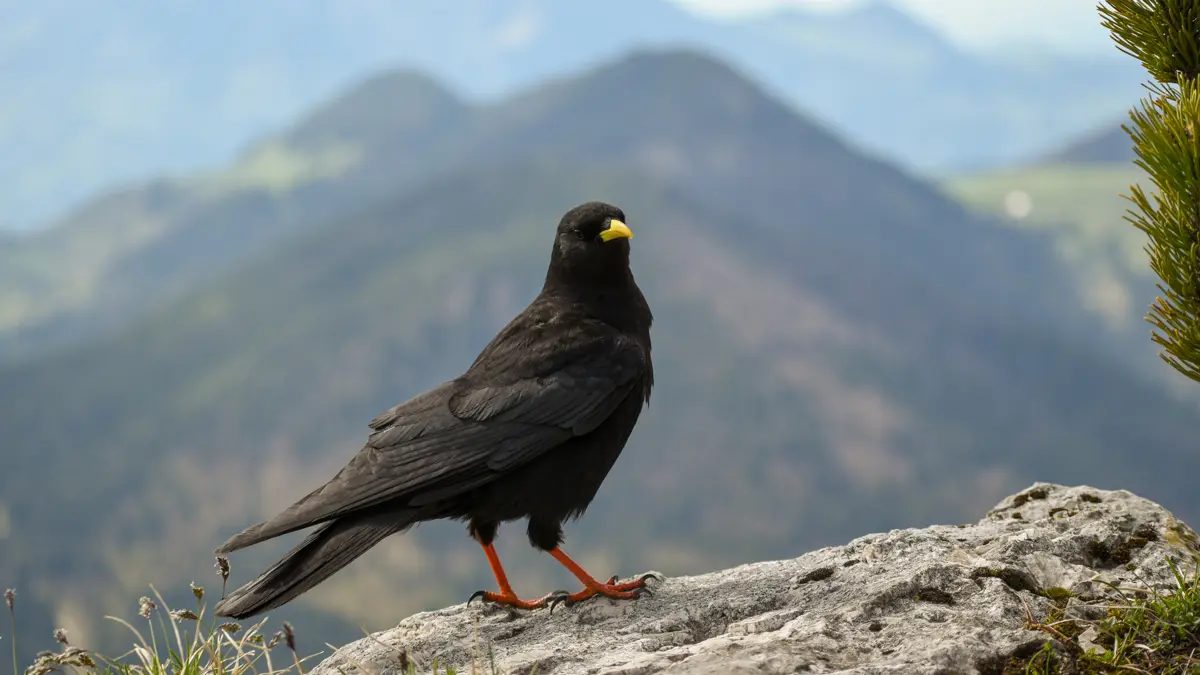
The Alpine chough is one of the most impressive, high altitude flyers in the animal kingdom and has been observed flying at over 8,000 meters. A member of the crow family, it is recognisable by its dark, black plumage, pointed yellow beak and bright red feet. The Alpine chough is often easy to spot at tourist spots located high in the mountains where it takes advantage of any excess crumbs visitors leave lying around after lunch.
An abundance of Alpine choughs can be found circling gracefully around the observatory at the top of the Jungfraujoch, which you can visit on an excursion from Wengen, Grindelwald and Interlaken. The Jungfraujoch provides an opportunity to get close to these incredible birds and to take some amazing photographs, complimented by the stunning mountain scenery.
Fire Salamander (Salamandra salamandra)
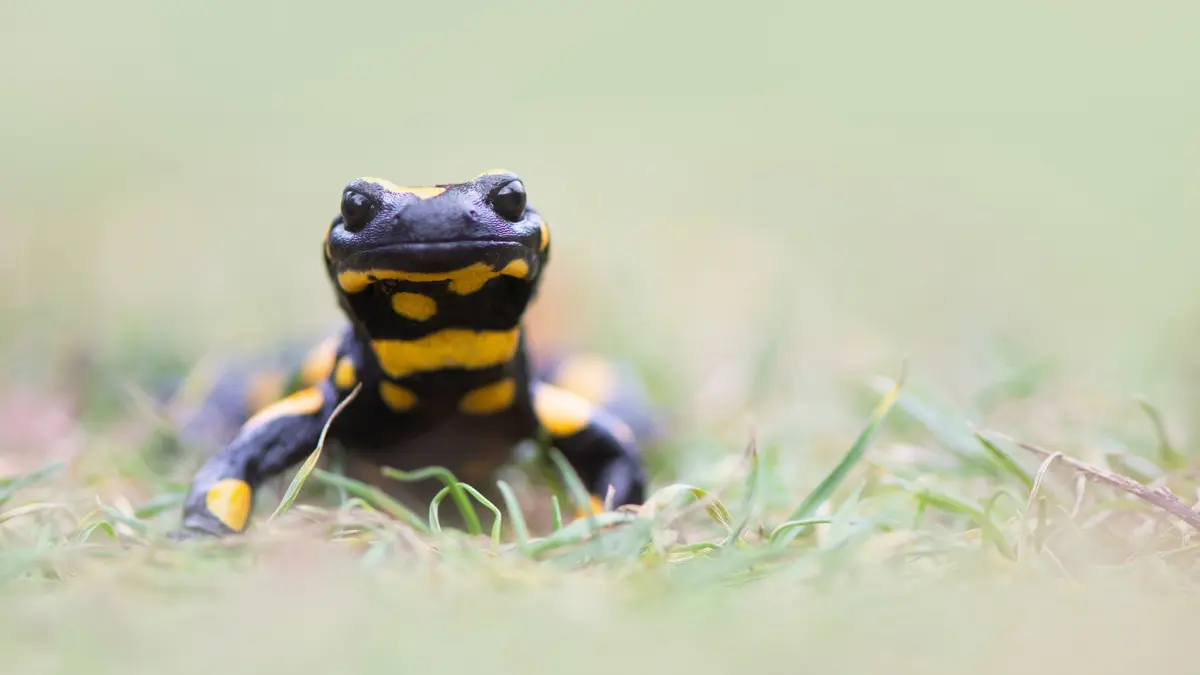
There are few greater thrills, and even fewer simpler ones, than stumbling across a fire salamander crawling along a gravelly path on a warm, Italian evening. You will be struck by the creature’s exotic and otherworldly appearance. Black leathery skin, covered in bright yellow splodges – personally I find them cute, but you would be forgiven for being intimidated. Their appearance is intended to warn potential predators of the poisonous secretions that can be found on their skin. This mucous also protects the salamander from fire, lending the creature its name.
Adult fire salamanders are fond of mossy and leafy forest floors, where they make their home. They return to areas of water to breed, with young salamander larvae living an entirely aquatic life. Look out for salamander in and around Lake Como in Northern Italy.
The wildlife of the lakes and mountains are elusive by nature. But the reward for finding them in their natural habitat is to witness some of the most fascinating behaviour and beautiful creatures of the animal kingdom. Observing wildlife in the lakes and mountains is highly recommended to anyone who plans to visit this part of the world.